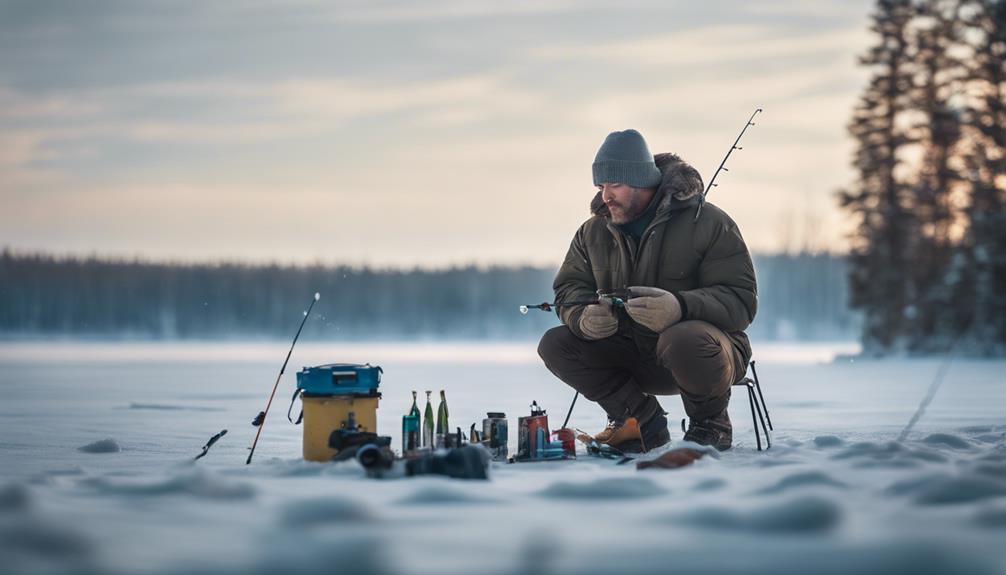Fly fishing for bonefish is an exhilarating pursuit that attracts anglers from around the globe. Known for their speed and elusiveness, bonefish are often referred to as the “grey ghosts” of the flats. In this comprehensive guide, we will explore the essentials of fly fishing for bonefish, covering everything from gear and techniques to the best locations and tips for success.
Understanding Bonefish: The Grey Ghosts of the Flats
Bonefish are primarily found in shallow coastal waters, often near coral reefs and sandy flats. They are renowned for their incredible speed and agility, making them a challenging target for fly fishermen. Adult bonefish can grow up to 30 inches long and weigh over 10 pounds, although most caught on fly are smaller. Their diet primarily consists of crustaceans, small fish, and worms, which makes understanding their feeding habits crucial for successful fly fishing for bonefish. By studying their behavior and preferred habitats, anglers can significantly increase their chances of landing these elusive fish.
The Essential Gear for Fly Fishing for Bonefish
When embarking on a fly fishing expedition for bonefish, having the right gear is essential. The first item on your checklist should be a quality fly rod, ideally between 8 to 10 weight, as this provides the strength and sensitivity required to handle these powerful fish. Pair your rod with a matching reel that has a strong drag system, as bonefish can make blistering runs. It’s also important to use a weight-forward floating line designed for saltwater conditions. For leaders, a fluorocarbon tippet of 12 to 16 pounds is recommended, as it provides invisibility underwater while still offering the strength needed to land bonefish. Lastly, don’t forget to pack a selection of bonefish flies, such as crab patterns, shrimp imitations, and baitfish patterns.
Choosing the Right Location for Bonefish Fly Fishing
Selecting the right location is a critical factor in successful fly fishing for bonefish. The Caribbean, particularly the Bahamas, is famous for its abundant bonefish populations. Other notable locations include Florida Keys, Belize, and the flats of Mexico’s Yucatán Peninsula. When choosing a location, consider factors such as tidal movements, weather conditions, and the time of year. Bonefish are most active during incoming tides, as they move onto the flats to feed. Research local fishing regulations and obtain any necessary permits to ensure a responsible and legal fishing experience.
Mastering the Techniques for Catching Bonefish
Fly fishing for bonefish requires specific techniques to effectively present your fly and entice a strike. Start by learning how to cast accurately and efficiently, as bonefish are often skittish and easily spooked. A double haul cast can help you achieve the distance and precision necessary for targeting these fish. When you spot a bonefish, make a gentle presentation of your fly at least a few feet in front of the fish to avoid spooking it. Strip the line with a steady rhythm, simulating the movement of prey. It’s essential to remain patient and observant, as bonefish will often follow your fly before deciding to strike. Understanding how to read the water and identify feeding lanes will greatly enhance your effectiveness on the flats.
Fly Patterns That Work Best for Bonefish
Choosing the right fly patterns is crucial when fly fishing for bonefish. Some of the most effective flies include shrimp and crab imitations, as these are staple food sources for bonefish. Popular fly patterns include the Crazy Charlie, Bonefish Bitter, and Clouser Minnow. It’s advisable to have a variety of colors and sizes in your fly box, as bonefish can be selective based on water clarity and lighting conditions. Experimenting with different patterns and presentations can lead to breakthrough moments in your fishing experience. Remember to check local fishing reports or consult local guides to find out what’s working best in your chosen area.
Tips for a Successful Bonefish Fishing Experience
To maximize your chances of success while fly fishing for bonefish, consider the following tips. First, always pay attention to the tides, as bonefish are more active during certain tidal movements. Early morning and late afternoon can be particularly productive times. Secondly, practice stealth and patience. Move slowly and quietly along the flats to avoid spooking fish. When you spot a bonefish, take your time to assess its behavior before making your cast. Additionally, investing in polarized sunglasses can significantly enhance your ability to spot bonefish and see into the water more clearly. Finally, consider hiring a local guide who knows the area well; their expertise can lead to a more fruitful and enjoyable fishing experience.
Conservation and Ethical Practices in Bonefish Fly Fishing
As anglers, it is our responsibility to practice sustainable fishing when pursuing species like bonefish. These fish are vital to the ecosystem and local economies, particularly in regions heavily reliant on tourism. Always adhere to local fishing regulations, including size and bag limits. Practice catch-and-release fishing whenever possible to help maintain bonefish populations. Additionally, be mindful of your surroundings and avoid damaging sensitive habitats, such as seagrass beds and coral reefs. Educating yourself about the local environment and participating in conservation initiatives can positively impact the future of bone fishing.
Conclusion: The Thrill of Fly Fishing for Bonefish Awaits
Fly fishing for bonefish is an adventure that combines skill, patience, and an appreciation for nature. By understanding the behavior of bonefish, equipping yourself with the right gear, and mastering effective techniques, you can create unforgettable fishing experiences on the flats. As you embark on your journey, remember to respect the fishery and contribute to conservation efforts. Whether you’re a seasoned angler or a novice, the thrill of casting to a bonefish will undoubtedly leave you hooked on this captivating sport. Grab your gear, head to the flats, and enjoy the exhilarating experience of fly fishing for bonefish!
